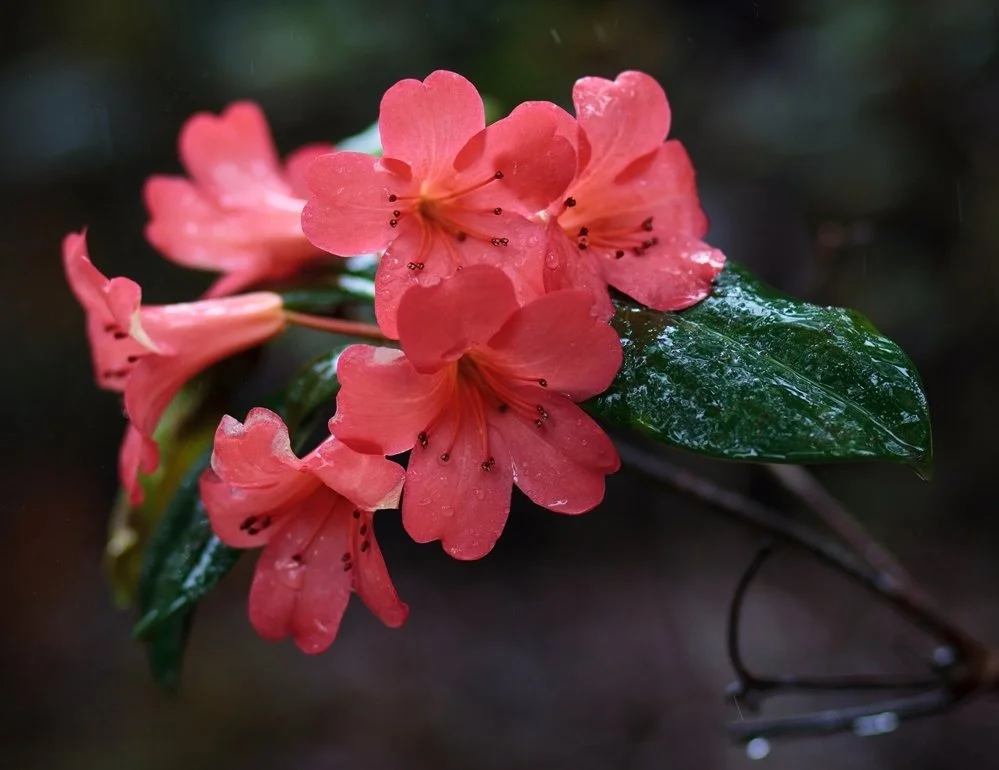
Vireya Rhododendrons present a whole new world of colour and interest to your gardening enjoyment
Vireyas originate from the highlands of tropical South East Asia. Places like Borneo in the Malay Archipeligo and New Guinea. Two species even come from mountains in Northern Queensland. Being of tropical origin, vireyas don’t recognise our four seasons, instead responding to wet and dry seasons. Whenever water becomes readily available, they will try to flower. It’s therefore possible to control their flowering.
Vireyas are frequently fragrant and have an extraordinary range of colours from white to strong red, with delicate shades of pink, and the most vivid oranges and yellows, as well as a very broad range of shapes and sizes, including large luxuriant trumpets, or tiny tubular or salver-form gems, or just about anything in between. There are plants that only grow a few centimetres high and others that grow into small trees.
Growing Vireyas
When vireyas first became established in a few privileged gardens in Australia, people considered them hard to grow, as plants were frequently grown in shaded areas, with their requirements poorly understood. We know now that they are easy to grow if their simple needs are met.
Growing Vireyas
Many Vireya species grow as epiphytes. That is, they grow like many orchids, simply by attaching themselves to moss or lichen on the trunk of a tree, and surviving on frequents rainfalls and precious little nutrient. Others do grow in the ground, but their needs are similar. The basic needs of most Vireya grown here in North West Tasmania are as follows:
· Protect from frost
· Provide perfect drainage
· Water very frequently
· Grow in strong sunlight
To assist you in following these rules, the following may prove helpful:
Frost runs downhill. Any barrier across a slope (fences, hedges, buildings, etc) will trap the frost on the uphill side. You will usually find a frost free area on the downhill side of such barriers.
Drainage is essential. Remember, most of the plants are used to living in the upper branches of trees. They will not handle having their roots submerged in wet soil for any period of time. Think of them like orchids. They need a very open soil mix — either in the ground or in pots.
Water well. Water is freely available in the natural habitat of these plants, often with misty rain or even tropical showers occurring once of more per day. Probably the most economical way to deliver this is by way of fixed micro-spray system with good fine misty jets (Wingfield green are excellent), used for 5 minutes per day.
Sun is essential for growing robust vireyas in all climates, and more so in Tasmania. Vireyas grown in shade will flower sparingly and become long, leggy plants. With full sun, or just a little (preferably afternoon) shade, you will have very floriferous, well shaped shrubs, which will be a delight in your garden.
Fertiliser should be used with great caution. Heavy chemical fertilisers may burn fragile new roots and destroy soil micro-life. Mulch well, use organic fertilisers, but sparingly. Water is more essential to life than fertiliser, these plants are born scroungers. If you want to push your young plants along to make good flowering size plants, use half strength liquid fertilisers — perhaps fortnightly.
Understand your plants. Here in Tasmania, most plants will put on strong growth only during warmer months, and although they may flower during winter, generally will not grow much at this time. Consequently, you will need to extract any required growth during warmer months. In Queensland, vireyas grow all winter, but stop when temperatures become to high.


